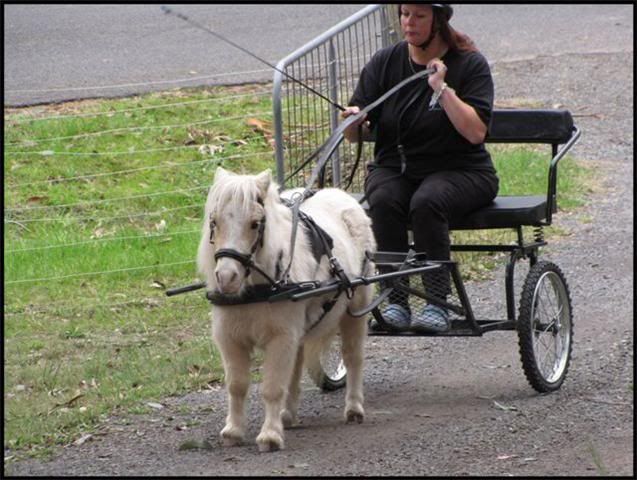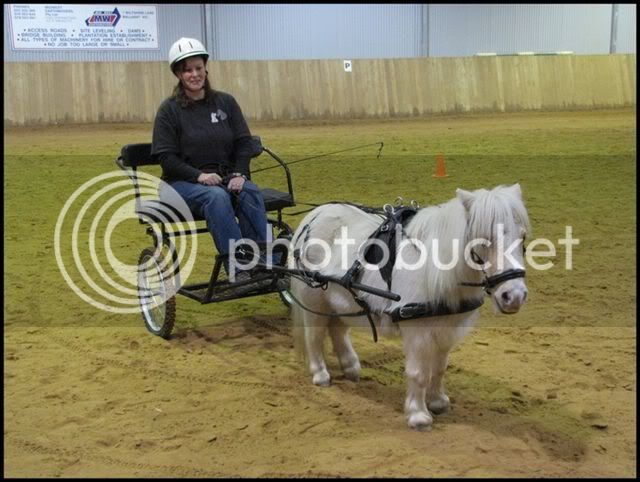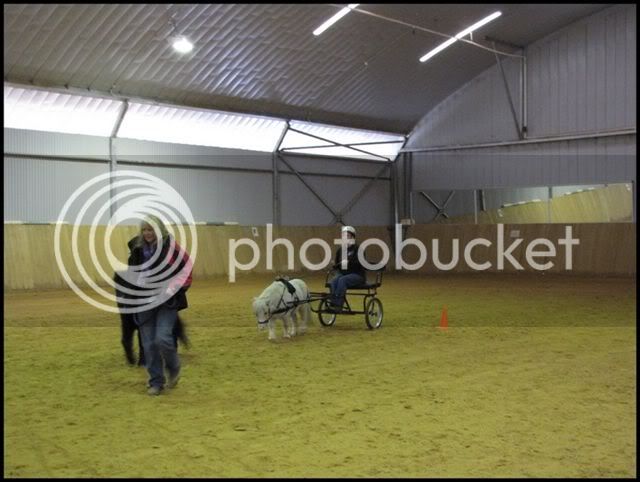Marsha Cassada said:
The vet pulled his mouth back quite a bit, using his finger like a bit, and showed that the bit wasn't resting by the molars. That is what made me think I might shorten the headstall. But I guess I will just double check and make sure it's not setting on his teeth, and leave it with one "smile" wrinkle.
That sounds good to me. If the vet had to pull his lips up that far, how comfortable do you think that would be for him on a regular basis? Especially if he has tight, thick lips!
Marsha Cassada said:
I wonder if anyone makes a bitless miniature bridle?
They do. I know someone locally who uses a custom Dr. Cook for trail driving and I've seen miniature sizes advertised on bitless websites. Makes sense if you're starting very young kids on riding! Don't give them a chance to ruin the horse's bars while they're learning.
Marsha Cassada said:
I volunteered at an A show last summer. One of the drivers had no bit with his horse. I remember the judges were horrified--but there was nothing in the rule book about it. I wish I had paid more attention to what the horse was wearing. But I didnt' even have Dusty then.
...I thought it was actually impressive, but the judges seemed to think it was dangerous.
It was. There's a big difference between using a bitless bridle and driving off the noseband and the noseband is bloody dangerous! I rode my elderly Arab bareback in a halter 90% of the time those last few years and he'd be utterly controllable, a complete gentleman. I could even get him to collect and do lateral work just like he had a bit in his mouth! I got in the habit of attaching reins to the halter part of a nylon halter-bridle combo headstall I'd had from his younger days and riding him that way because it looked more formal than the actual barn halter and I thought I could steer better. Well, we got to the beach that way and my old man came alive and suddenly wouldn't listen to the headstall anymore.
I realized that I had NO control and the only thing that kept me from getting hurt is that he was careful even as he dragged me off down the beach in the direction
he wanted to go not to do anything to put us at risk. The barn halter was actually better as it sat much lower on his nose and to some extent I could wrestle his head down but the combo headstall sat up just under his cheekbones where a cavesson usually sits and he was able to put his nose up and keep it there and completely neutralize anything but directional aids. It was an, um, "exciting exercise" in learning to modulate my horse's energy solely through breathing and seat aids but I wouldn't want to repeat it and the thought of having a horse do that in a cart puts me in a cold sweat.
At least if a riding horse gets out of control at worst case you can bail out and there's only a loose horse to catch. If a driving horse gets out of control they're taking off with a large and heavy weapon attached which will only scare them further and cause much harm bouncing off spaces too small for it. In my opinion that additional danger makes it the driver's responsibility to protect innocent bystanders by doing whatever is necessary to prevent that sort of accident. If someone wants to trail drive their horse in a bitless bridle that's their call. Driving in a group, well, that could be debated. Riding- sure, go for it! I probably will. But in NO account, in my opinion, should someone be driving a horse off the noseband of a regular bridle or halter in a show situation! If that horse should panic and stop paying attention to his training (the mental component that makes him respect pressure on the noseband as meaning something like "stop" or "turn") the driver has no recourse at all and may not even be able to turn the horse.
I stretch a lot of traditional handling boundaries with my horses because of unspoken things like trust and intuition but even I am not willing to risk the safety other competitor's horses by doing something like that in such a stressful situation where horses already flip out with bits on. I don't like the idea of stopping a horse through pain but if it's rip his mouth off and stop him or be touchy-feely and have the horse ruined for life in a horrific accident, I'll rip his face off every time and apologize later.
Leia
Edited to add: I'm surprised the rule stating the check must be attached to the bit did not kick in by default. I know one of the registries fails to specify that but I thought the other one did?






























